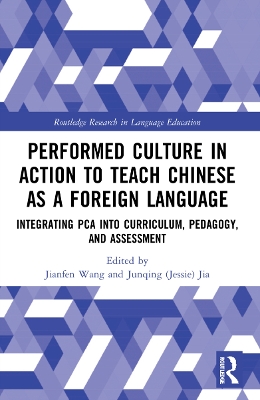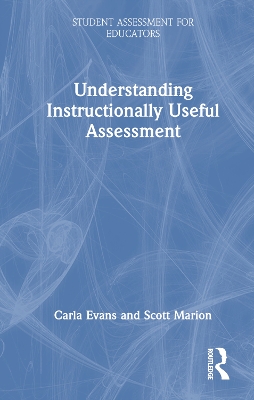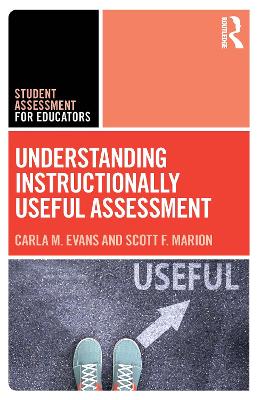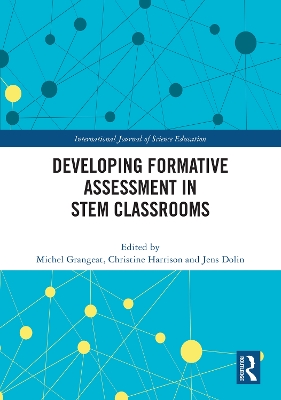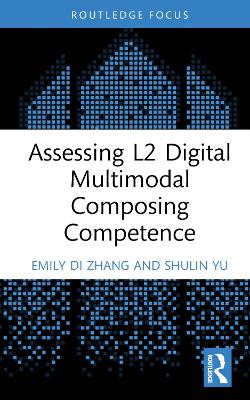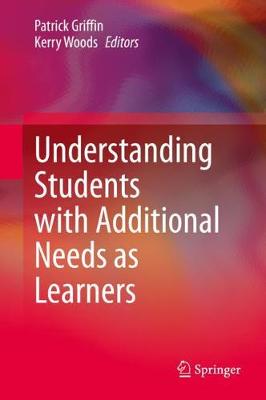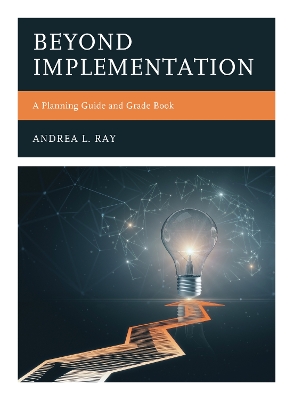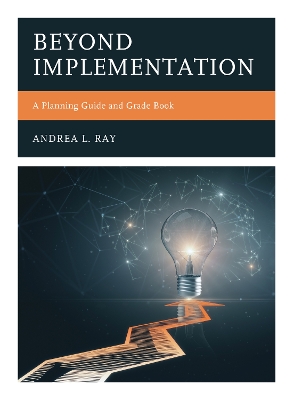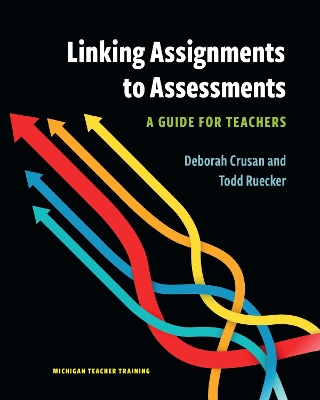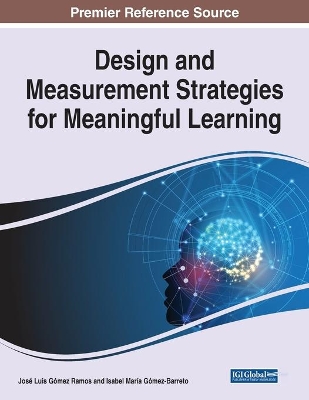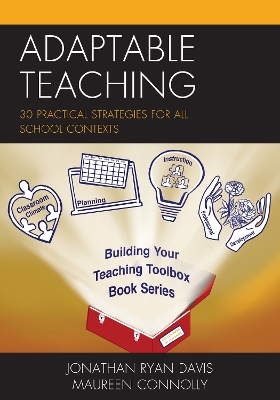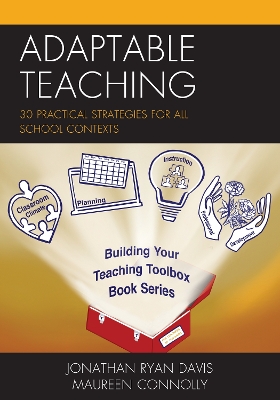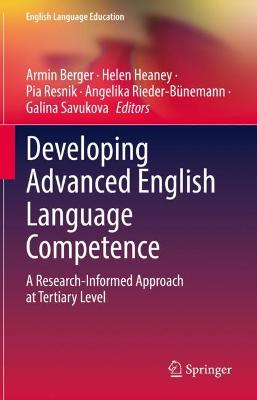Understanding Students with Additional Needs as Learners
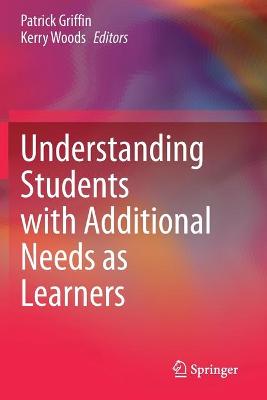 portes grátis
portes grátis
Understanding Students with Additional Needs as Learners
Griffin, Patrick; Woods, Kerry
Springer Nature Switzerland AG
12/2021
231
Mole
Inglês
9783030565985
15 a 20 dias
385
Chapter 1. From little things: Introduction and background to the study (Patrick Griffin)
NEW
This chapter presents the full narrative of the origins of the SWANs research project that was conducted over more than ten years. It discusses the context in which the idea for the SWANs study emerged and the importance of critical incidents in stimulating research and development. It illustrates the events in a school classroom in 2003 involving a student teacher evaluation class, a supervising teacher who did not know how to include a student with additional needs in classroom activities, and the inadequacy of materials available for mainstream teachers who had students with additional needs in the classroom.
Chapter 2. Developing the SWANs constructs of communication, literacy, numeracy, digital literacy, thinking and learning skills, movement, and social and emotional understanding (Patrick Griffin)
REPRINT permission needed
Griffin, P. (2007). The comfort of competence and the uncertainty of assessment. Studies in Educational Evaluation. 33(2007): 87-99
In the 1960s, two developments provided insights into the interpretation of educational measurements; later, in the 1980s, when powerful, accessible computing technology became available, the value of the two developments became more apparent. Rasch (1960, 1980) and Glaser (1963, 1981) each opened new ways of thinking about learning and measurement, and proposed the concept of underlying growth continua, or latent traits. They reasoned that the nature of these traits could be defined by the tasks that students performed; if the tasks were to be arranged in order of their increasing amounts of attribute required (student capability), then the nature of the trait could be defined by the nature and order of the tasks and the skills they demanded. Development of learning or competency could be traced by following progress along the trait or growth continuum. Glaser (1963) proposed the concept of criterion-referenced interpretation of assessments. Like Rasch (1960, 1980), he described performance and development in terms of the nature and order of tasks performed. Initially, when criterion-referenced interpretations of assessment were used, observations were referred (or compared) directly to a single, fixed level of achievement or pre-specified criterion. If this level of performance was demonstrated, it was interpreted in terms of either mastery or non-mastery, by referencing to a single cut-off score. Only one threshold was used. Glaser (1963) originally used the term criterion to refer to a defined domain (area) of content or behaviour to which the test items were referenced.
Chapter 3. The SWANs research: A partnership between school leaders, teachers, researchers and the education system (Kerry Woods)
(NEW)
The SWANs research was conducted as a partnership between the Victorian Department of Education and Training and a team of researchers at the University of Melbourne. That partnership was extended to include Victorian, and later South Australian and West Australian, schools and teachers who took an active role and close interest in every aspect of the design and validation of assessment materials, reporting formats, links to curriculum materials, and support advice. This chapter describes the process of the design of an integrated program of support for teachers of students with additional needs, and the way that program was checked and negotiated with teachers and school leaders at critical stages in the research. The examples given in the chapter describe the design of an assessment of functional communication skills for students with addition learning needs in this area.
In local schools, the combination of the SWANs assessments, concurrent work on curriculum support for students working outside the established curriculum of the day, and training programs and field support for teachers was brought together as the Abilities Based Learning and Education Support (ABLES) resources. This is a suite of closely integrated resources that the Victorian Department of Education and Training has assembled to support instructional planning for students with disability. Design principles that guided the development of the curriculum materials are described in Chapter 4.
The SWANs research at the University focused on the design and validation of assessments that describe student's abilities, rather than their disabilities, across foundational areas of learning - communication, literacy, numeracy, digital literacy, thinking skills, learning skills, movement, and social and emotional skills. Each of the learning areas was discussed with representative groups of school leaders and teachers, to reach consensus that these were, indeed, important skills for all students, including those with additional needs, to learn. However, it was recognised that the emphasis or definition of a skill, such as literacy, numeracy, thinking, digital literacy or, indeed, any of the skills included in the research, may need to be specifically tailored to best meet the instructional needs of students. As one example, the skill of literacy was defined as 'making meaning by the use and interpretation of symbols' to broaden the meaning of literacy beyond skills of reading and writing text and include components such as making meaning from picture symbols. It was also recognised that, if the intention of the research was to support teachers in their instructional planning, the report format should help teachers focus on the things their students are currently learning to do rather than on how far they lag behind other students.
Chapter 4. Designing curriculum for all students (Karen Underwood and Kerry Woods)
NEW
This chapter sets out the historical process of developing curriculum resources and presentation principles to guide teachers' planning for the instruction of students whose learning was not adequately described in the school curriculum of the day. Until the first decade of this century, school curricula in all states of Australia started from a preparatory or foundational year and described the expected learning focus across a range of subjects for students in each successive year of schooling. However, the skills and knowledge that students were expected to learn in their earliest years at school were clearly beyond the capability of many children and young people with severe cognitive disability or additional learning needs. Further, many students with both mild and more severe intellectual disability did not learn at the same pace as students without disability, so that the coupling of student age or year level to curriculum standards was not a helpful way to identify what these students knew and were ready to learn next. Age was a poor predictor of understanding or skill level, so a curriculum that used student age or grade as an organizing principle to identify what to teach was of little real assistance to teachers of students with additional needs.
In 2004, the Victorian Department of Education and Training started work on the design of materials to ensure the learning of all students, including those with profound intellectual disability, was described within a single, inclusive curriculum. This chapter describes both the design decisions taken as part of that process and the steps taken along that journey. The chapter begins by acknowledging the guidance taken from the Disability Standards for Education (2005) to ensure that curriculum materials supported schools' obligations to meet legislated requirements for the equitable education of students with disability. It explains the impact of the development of a common approach to curriculum in Australia (ACARA, 2019) and steps taken in Victoria to ensure that the learning of every student was acknowledged in the state's approach to curriculum presentation. It sets out the process followed to write curriculum materials, including the use of the Students with Additional Needs (SWANs) research to describe levels of increasing independence and proficiency, and to trial the materials with the support and collaboration of experienced special educators.
Chapter 5. Observing problem-solving skills in students with additional needs (Toshiko Kamei)
NEW
In a changing society with evolving needs and occupations, problem-solving is increasingly seen as an essential skill for success in many contexts, including school and the workplace. However, students with additional learning needs often lack the necessary support to be successful in this skill domain. The aim of the study described in this chapter was to design rubrics for problem-solving that define progressive levels of learning to support the instruction of this cohort of students. A working definition of problem-solving was used to draft observation statements in the form of rubrics that teachers could use to describe their students' skill development. Workshops were conducted with specialist who critiqued and extended these draft rubrics, and mapped them to a learning progression. These materials were then trialled by experienced special education teachers, who reviewed them and generated intervention strategies for students at different skill levels on the derived progression. The outcome of the study was a set of assessment rubrics and level descriptions that teachers could use to support the learning of students with additional needs in a skill domain often dismissed as too demanding to be included in their personal programs.
Chapter 6. Making judgements about literacy skills for students with additional needs (Kerry Woods and Patrick Griffin)
REPRINT
Woods, K. & Griffin, P. (2013). Judgement-based performance measures of literacy for students with additional needs: seeing students through the eyes of experienced special education teachers. Assessment in Education: Principles, Policy & Practice. 20(3), 325-348
This chapter describes the development of judgement-based performance measures to support the instruction of students with additional learning needs. The focus of the research was the design of assessment materials and protocols to help teachers recognise and respond to students' proficiency in foundational
literacy skills. It drew on the expertise of special education teachers to provide all teachers with an evidence framework against which to observe their students' learning. The assessment materials were trialled in 53 schools and used to monitor literacy learning for 547 students, who ranged in age from 3 to 18 years
and represented children and young people with a wide diversity and severity of
disabilities. The chapter reports a new approach to judgement-based performance measurement that directs teachers' observations to meaningful shifts and transformations in foundational literacy skills for students with additional needs.
Chapter 7. Mapping social learning for students with additional needs (Bernadette Coles-Janess and Patrick Griffin)
Coles-Janess, B. & Griffin, P. (2009). Mapping Transitions in Interpersonal Learning for Students with Additional Needs. Australasian Journal of Special Education. 33(2): 141-150.
REPRINT
Schools are a pervasive socialising force second only to families in their impact on the development of most children. In recognition of this pivotal role, society holds high expectations of them and essentially entrusts them with the mission of equipping students for life. Typically, this has led schools to focus on the academic essentials, the three R's, but increasingly the need to focus on a fourth R, relationships, is being realised (Ladd, 2000). This is not surprising as the ability to establish successful relationships with a range of people is fundamental to the ongoing life success of all students. For many children social interaction appears to come naturally, with the basics seemingly effortlessly grasped and executed and relationships readily made. However, a significant number struggle and for some subgroups of children acquisition of the basics remains elusive. In a policy report released by the National Institute of Early Educational Research it was estimated that approximately 20% of all children entering kindergarten were not sufficiently socio-emotionally developed to engage with the curriculum or their peers. This chapter describes the design of an assessment of social processes that was validated for students with a diverse range of additional learning needs.
Chapter 8. Assessing and teaching thinking skills for students with additional needs (Toshiko Kamei)
NEW
This chapter begins with the basic premise that thinking is a learnable skill and one that has been emphasised in curricula internationally. Research has shown that it is a key component of success academically and that students benefit from explicit instruction in thinking to build skills to learn and access all areas of the curriculum (Diamond & Lee, 2011; Rueda, Checa, & Combita, 2012). However, there are few resources available to teach thinking skills for students with disability. This chapter describes research that developed a measure of thinking skills to provide teachers with an integrated system of assessment, reporting, planning, and instructional advice. It followed a previously established methodological approach to create judgement-based assessments reported against criterion-referenced learning progressions (Coles-Janess & Griffin, 2009; Strickland, Woods, & Pavlovic, 2016; Woods & Griffin, 2013). The design of the measure drew on the work of Dewey and Piaget to identify the foundations of thinking, and then the research switched to close collaboration with experienced teachers of students with disability to propose and review a bank of thinking skills instructional advice for students working at different levels of proficiency and understanding.
Chapter 9. Developing a progression of early numeracy skills to guide instructional planning for students with additional needs (Jane Strickland and Masa Pavlovic)
NEW
Almost 5% of Australian students fail to reach minimum standards for numeracy as assessed on the national assessment and monitoring program, and this is of particular concern in light of evidence that poor numeracy contributes to lifelong problems such as difficulty gaining and maintaining employment. Learning progressions, particularly in mathematics, have been identified as effective ways to support teachers' understanding of skill development and to connect assessment and pedagogy. The work described in this chapter designed an assessment of early numeracy skills for students with additional learning needs that could be mapped to a learning progression. Trialled with 2597 students from 65 schools, a set of items based on teacher observation and judgement measured skills that provide a foundation for participation in numeracy learning across the school years. Analysis of the data, using a partial credit approach to item response modelling, found that the items could describe numeracy learning across a broad range of proficiency, although gaps were identified for students at the highest and lowest extremes of numeracy understanding. Analysis of differential item functioning (DIF) suggested that the items measured numeracy skills and understanding consistently for students with different sub types of additional learning need.
Chapter 10. Tailoring digital literacy learning for students with additional needs (Emily White and Shiralee Poed)
NEW
Many teachers cite difficulty assessing and teaching specialised areas of learning such as digital or information and communications literacy. This is problematic for students with disability as digital literacy enables technology use to access learning opportunities. For students with vision impairment (VI), for example, the ability to use a computer and the internet is associated with higher literacy test scores, and technology use supports improvements in learning maths. This chapter describes the findings of a study of 1,413 students with a wide diversity of additional learning needs that aimed to support teachers' recognition of digital literacy in students with disabilities and with a focus on those with VI. The study applied partial credit item response modelling to develop a progression of digital literacy for these students. The impacts of teacher and student background characteristics on their respective ability to assess and develop digital literacy are discussed in the chapter. The results of this program of research may assist teachers to understand the digital literacy capability of students with disability, including VI, and how best to design thoughtful and individually tailored programs of learning.
Chapter 11. Motor learning for students with movement difficulties (Lindsey Gale)
NEW
To place students with movement difficulties at the centre of their learning, movement learning needs must be taken into account. Teachers are well placed to scaffold learning environments to facilitate maximum physical engagement; however, in mainstream settings they are under-resourced for this work, with the result that classrooms are often "over-protective spaces" with reduced motor learning potential. This research aimed to support learning equity for students with physical disability by resourcing classroom teachers and allied health professionals to address students' movement learning needs. Drawing on motor learning theory and a methodology for constructing developmental learning frameworks, 19 behaviorally anchored rating scales were developed that referenced the movements of classroom learning. These were trialled by observational assessment of 650 students with physical disabilities and analysed using partial credit item response modelling. The result was a five-dimensional, standards-referenced scale in classroom movement problem-solving, which, when used with students of different physical capabilities, indicated its ability to pinpoint priority areas for intervention.
Chapter 12. Differing Progressions of Cognitive Skill Development for Students with Additional: Learning Needs and Autism Spectrum Disorder.
(Eileen Roberts and Patrick Griffin)
Eileen Roberts and Patrick Griffin
From 2007 to 2009, an assessment of core learning skills, such as attention, memory, task organisation and executive functioning, was developed in consultation with expert panels of special education teachers. Teachers from 52 mainstream and specialist schools assisted in the design and then trial of a set of items based on a criterion-referenced approach to skill description. Following procedures described by Griffin, Gillis and Calvitto (2004), the emergence of skills was investigated by an expert panel of special education teachers for clusters or themes that could be used to develop generalised progressions of skill emergence for reporting purposes. As part of this work, the development of learning skills in students with and without autism spectrum disorder, in addition to intellectual disability, was investigated. While there were overall similarities between the relative difficulty of skills for each group, some specific areas of strengths and weaknesses for students with autism spectrum disorder became apparent. This suggested the possibility of reporting two different and interpretable progressions of skill development: one for students with an intellectual disability and one for those with both intellectual disability and autism spectrum disorder. This paper discusses these results and how the analyses were used to build reports that allow teachers to consider their pedagogical practices and intervention plans for these students within a developmental learning paradigm.
Chapter 13. Assessing understanding of emotion for students with additional needs (Eileen Roberts and Patrick Griffin)
Roberts, E. & Griffin, P. (2009). Profiling Transitions in Emotional Development for Students with Additional Learning Needs. Australasian Journal of Special Education. 33(2).
REPRINT
In the area of students' emotional development, teachers have limited access to information that supports their assessment of progress and underpins decisions about setting goals for learning and appraising teaching strategies. This chapter describes a research program that attempted to redress this situation by working with teachers to develop an appropriate and inclusive profile of emotional development for students with additional needs. As a first step, rubrics were designed to support teachers' judgements about students' recognition of the experience and expression of emotion in themselves and in others. This relied on the knowledge and collaboration of experienced teachers to establish an hypothesised framework of critical skills, descriptions of observable behaviours, and criteria of progress that mapped pedagogically important transitions in student behaviour. The framework was subsequently validated against observation data gathered by teachers from 77 Victorian schools. The teachers' observations of their students were calibrated using partial credit item response modelling to empirically identify major shifts in students' emotional development and to establish the validity and utility of the profile.
Chapter 14. Using an integrated system of assessment, curriculum, and pedagogical advice for instructional planning (Kerry Woods and Karen Underwood)
NEW
This chapter provides insights gathered over more than ten years of work with school leaders and teachers on how the SWANs materials can be used to guide instructional planning for students with additional needs. It sets out some of the questions that teachers ask as they strive to tailor learning experiences to best meet the needs of each student, and explains how the SWANs materials can be used to deepen teachers' knowledge about their students as learners and about the skills they are teaching. It advocates a close integration between classroom practice and system level guidance, including curriculum resources, to give teachers support and advice that is readily at hand and easy to use and interpret, so that teachers can confidently plan for the learning of all students in their classroom, including students with a wide range and diversity of additional learning needs. It repeats the guiding principles of this book - that all students can learn, and have a right to learn, and that all teachers can teach students with additional needs when appropriately supported.
Appendix A
NEW
Accessing the SWANS instruments and interpretive reports online (ARCOTS)
Chapter 1. From little things: Introduction and background to the study (Patrick Griffin)
NEW
This chapter presents the full narrative of the origins of the SWANs research project that was conducted over more than ten years. It discusses the context in which the idea for the SWANs study emerged and the importance of critical incidents in stimulating research and development. It illustrates the events in a school classroom in 2003 involving a student teacher evaluation class, a supervising teacher who did not know how to include a student with additional needs in classroom activities, and the inadequacy of materials available for mainstream teachers who had students with additional needs in the classroom.
Chapter 2. Developing the SWANs constructs of communication, literacy, numeracy, digital literacy, thinking and learning skills, movement, and social and emotional understanding (Patrick Griffin)
REPRINT permission needed
Griffin, P. (2007). The comfort of competence and the uncertainty of assessment. Studies in Educational Evaluation. 33(2007): 87-99
In the 1960s, two developments provided insights into the interpretation of educational measurements; later, in the 1980s, when powerful, accessible computing technology became available, the value of the two developments became more apparent. Rasch (1960, 1980) and Glaser (1963, 1981) each opened new ways of thinking about learning and measurement, and proposed the concept of underlying growth continua, or latent traits. They reasoned that the nature of these traits could be defined by the tasks that students performed; if the tasks were to be arranged in order of their increasing amounts of attribute required (student capability), then the nature of the trait could be defined by the nature and order of the tasks and the skills they demanded. Development of learning or competency could be traced by following progress along the trait or growth continuum. Glaser (1963) proposed the concept of criterion-referenced interpretation of assessments. Like Rasch (1960, 1980), he described performance and development in terms of the nature and order of tasks performed. Initially, when criterion-referenced interpretations of assessment were used, observations were referred (or compared) directly to a single, fixed level of achievement or pre-specified criterion. If this level of performance was demonstrated, it was interpreted in terms of either mastery or non-mastery, by referencing to a single cut-off score. Only one threshold was used. Glaser (1963) originally used the term criterion to refer to a defined domain (area) of content or behaviour to which the test items were referenced.
Chapter 3. The SWANs research: A partnership between school leaders, teachers, researchers and the education system (Kerry Woods)
(NEW)
The SWANs research was conducted as a partnership between the Victorian Department of Education and Training and a team of researchers at the University of Melbourne. That partnership was extended to include Victorian, and later South Australian and West Australian, schools and teachers who took an active role and close interest in every aspect of the design and validation of assessment materials, reporting formats, links to curriculum materials, and support advice. This chapter describes the process of the design of an integrated program of support for teachers of students with additional needs, and the way that program was checked and negotiated with teachers and school leaders at critical stages in the research. The examples given in the chapter describe the design of an assessment of functional communication skills for students with addition learning needs in this area.
In local schools, the combination of the SWANs assessments, concurrent work on curriculum support for students working outside the established curriculum of the day, and training programs and field support for teachers was brought together as the Abilities Based Learning and Education Support (ABLES) resources. This is a suite of closely integrated resources that the Victorian Department of Education and Training has assembled to support instructional planning for students with disability. Design principles that guided the development of the curriculum materials are described in Chapter 4.
The SWANs research at the University focused on the design and validation of assessments that describe student's abilities, rather than their disabilities, across foundational areas of learning - communication, literacy, numeracy, digital literacy, thinking skills, learning skills, movement, and social and emotional skills. Each of the learning areas was discussed with representative groups of school leaders and teachers, to reach consensus that these were, indeed, important skills for all students, including those with additional needs, to learn. However, it was recognised that the emphasis or definition of a skill, such as literacy, numeracy, thinking, digital literacy or, indeed, any of the skills included in the research, may need to be specifically tailored to best meet the instructional needs of students. As one example, the skill of literacy was defined as 'making meaning by the use and interpretation of symbols' to broaden the meaning of literacy beyond skills of reading and writing text and include components such as making meaning from picture symbols. It was also recognised that, if the intention of the research was to support teachers in their instructional planning, the report format should help teachers focus on the things their students are currently learning to do rather than on how far they lag behind other students.
Chapter 4. Designing curriculum for all students (Karen Underwood and Kerry Woods)
NEW
This chapter sets out the historical process of developing curriculum resources and presentation principles to guide teachers' planning for the instruction of students whose learning was not adequately described in the school curriculum of the day. Until the first decade of this century, school curricula in all states of Australia started from a preparatory or foundational year and described the expected learning focus across a range of subjects for students in each successive year of schooling. However, the skills and knowledge that students were expected to learn in their earliest years at school were clearly beyond the capability of many children and young people with severe cognitive disability or additional learning needs. Further, many students with both mild and more severe intellectual disability did not learn at the same pace as students without disability, so that the coupling of student age or year level to curriculum standards was not a helpful way to identify what these students knew and were ready to learn next. Age was a poor predictor of understanding or skill level, so a curriculum that used student age or grade as an organizing principle to identify what to teach was of little real assistance to teachers of students with additional needs.
In 2004, the Victorian Department of Education and Training started work on the design of materials to ensure the learning of all students, including those with profound intellectual disability, was described within a single, inclusive curriculum. This chapter describes both the design decisions taken as part of that process and the steps taken along that journey. The chapter begins by acknowledging the guidance taken from the Disability Standards for Education (2005) to ensure that curriculum materials supported schools' obligations to meet legislated requirements for the equitable education of students with disability. It explains the impact of the development of a common approach to curriculum in Australia (ACARA, 2019) and steps taken in Victoria to ensure that the learning of every student was acknowledged in the state's approach to curriculum presentation. It sets out the process followed to write curriculum materials, including the use of the Students with Additional Needs (SWANs) research to describe levels of increasing independence and proficiency, and to trial the materials with the support and collaboration of experienced special educators.
Chapter 5. Observing problem-solving skills in students with additional needs (Toshiko Kamei)
NEW
In a changing society with evolving needs and occupations, problem-solving is increasingly seen as an essential skill for success in many contexts, including school and the workplace. However, students with additional learning needs often lack the necessary support to be successful in this skill domain. The aim of the study described in this chapter was to design rubrics for problem-solving that define progressive levels of learning to support the instruction of this cohort of students. A working definition of problem-solving was used to draft observation statements in the form of rubrics that teachers could use to describe their students' skill development. Workshops were conducted with specialist who critiqued and extended these draft rubrics, and mapped them to a learning progression. These materials were then trialled by experienced special education teachers, who reviewed them and generated intervention strategies for students at different skill levels on the derived progression. The outcome of the study was a set of assessment rubrics and level descriptions that teachers could use to support the learning of students with additional needs in a skill domain often dismissed as too demanding to be included in their personal programs.
Chapter 6. Making judgements about literacy skills for students with additional needs (Kerry Woods and Patrick Griffin)
REPRINT
Woods, K. & Griffin, P. (2013). Judgement-based performance measures of literacy for students with additional needs: seeing students through the eyes of experienced special education teachers. Assessment in Education: Principles, Policy & Practice. 20(3), 325-348
This chapter describes the development of judgement-based performance measures to support the instruction of students with additional learning needs. The focus of the research was the design of assessment materials and protocols to help teachers recognise and respond to students' proficiency in foundational
literacy skills. It drew on the expertise of special education teachers to provide all teachers with an evidence framework against which to observe their students' learning. The assessment materials were trialled in 53 schools and used to monitor literacy learning for 547 students, who ranged in age from 3 to 18 years
and represented children and young people with a wide diversity and severity of
disabilities. The chapter reports a new approach to judgement-based performance measurement that directs teachers' observations to meaningful shifts and transformations in foundational literacy skills for students with additional needs.
Chapter 7. Mapping social learning for students with additional needs (Bernadette Coles-Janess and Patrick Griffin)
Coles-Janess, B. & Griffin, P. (2009). Mapping Transitions in Interpersonal Learning for Students with Additional Needs. Australasian Journal of Special Education. 33(2): 141-150.
REPRINT
Schools are a pervasive socialising force second only to families in their impact on the development of most children. In recognition of this pivotal role, society holds high expectations of them and essentially entrusts them with the mission of equipping students for life. Typically, this has led schools to focus on the academic essentials, the three R's, but increasingly the need to focus on a fourth R, relationships, is being realised (Ladd, 2000). This is not surprising as the ability to establish successful relationships with a range of people is fundamental to the ongoing life success of all students. For many children social interaction appears to come naturally, with the basics seemingly effortlessly grasped and executed and relationships readily made. However, a significant number struggle and for some subgroups of children acquisition of the basics remains elusive. In a policy report released by the National Institute of Early Educational Research it was estimated that approximately 20% of all children entering kindergarten were not sufficiently socio-emotionally developed to engage with the curriculum or their peers. This chapter describes the design of an assessment of social processes that was validated for students with a diverse range of additional learning needs.
Chapter 8. Assessing and teaching thinking skills for students with additional needs (Toshiko Kamei)
NEW
This chapter begins with the basic premise that thinking is a learnable skill and one that has been emphasised in curricula internationally. Research has shown that it is a key component of success academically and that students benefit from explicit instruction in thinking to build skills to learn and access all areas of the curriculum (Diamond & Lee, 2011; Rueda, Checa, & Combita, 2012). However, there are few resources available to teach thinking skills for students with disability. This chapter describes research that developed a measure of thinking skills to provide teachers with an integrated system of assessment, reporting, planning, and instructional advice. It followed a previously established methodological approach to create judgement-based assessments reported against criterion-referenced learning progressions (Coles-Janess & Griffin, 2009; Strickland, Woods, & Pavlovic, 2016; Woods & Griffin, 2013). The design of the measure drew on the work of Dewey and Piaget to identify the foundations of thinking, and then the research switched to close collaboration with experienced teachers of students with disability to propose and review a bank of thinking skills instructional advice for students working at different levels of proficiency and understanding.
Chapter 9. Developing a progression of early numeracy skills to guide instructional planning for students with additional needs (Jane Strickland and Masa Pavlovic)
NEW
Almost 5% of Australian students fail to reach minimum standards for numeracy as assessed on the national assessment and monitoring program, and this is of particular concern in light of evidence that poor numeracy contributes to lifelong problems such as difficulty gaining and maintaining employment. Learning progressions, particularly in mathematics, have been identified as effective ways to support teachers' understanding of skill development and to connect assessment and pedagogy. The work described in this chapter designed an assessment of early numeracy skills for students with additional learning needs that could be mapped to a learning progression. Trialled with 2597 students from 65 schools, a set of items based on teacher observation and judgement measured skills that provide a foundation for participation in numeracy learning across the school years. Analysis of the data, using a partial credit approach to item response modelling, found that the items could describe numeracy learning across a broad range of proficiency, although gaps were identified for students at the highest and lowest extremes of numeracy understanding. Analysis of differential item functioning (DIF) suggested that the items measured numeracy skills and understanding consistently for students with different sub types of additional learning need.
Chapter 10. Tailoring digital literacy learning for students with additional needs (Emily White and Shiralee Poed)
NEW
Many teachers cite difficulty assessing and teaching specialised areas of learning such as digital or information and communications literacy. This is problematic for students with disability as digital literacy enables technology use to access learning opportunities. For students with vision impairment (VI), for example, the ability to use a computer and the internet is associated with higher literacy test scores, and technology use supports improvements in learning maths. This chapter describes the findings of a study of 1,413 students with a wide diversity of additional learning needs that aimed to support teachers' recognition of digital literacy in students with disabilities and with a focus on those with VI. The study applied partial credit item response modelling to develop a progression of digital literacy for these students. The impacts of teacher and student background characteristics on their respective ability to assess and develop digital literacy are discussed in the chapter. The results of this program of research may assist teachers to understand the digital literacy capability of students with disability, including VI, and how best to design thoughtful and individually tailored programs of learning.
Chapter 11. Motor learning for students with movement difficulties (Lindsey Gale)
NEW
To place students with movement difficulties at the centre of their learning, movement learning needs must be taken into account. Teachers are well placed to scaffold learning environments to facilitate maximum physical engagement; however, in mainstream settings they are under-resourced for this work, with the result that classrooms are often "over-protective spaces" with reduced motor learning potential. This research aimed to support learning equity for students with physical disability by resourcing classroom teachers and allied health professionals to address students' movement learning needs. Drawing on motor learning theory and a methodology for constructing developmental learning frameworks, 19 behaviorally anchored rating scales were developed that referenced the movements of classroom learning. These were trialled by observational assessment of 650 students with physical disabilities and analysed using partial credit item response modelling. The result was a five-dimensional, standards-referenced scale in classroom movement problem-solving, which, when used with students of different physical capabilities, indicated its ability to pinpoint priority areas for intervention.
Chapter 12. Differing Progressions of Cognitive Skill Development for Students with Additional: Learning Needs and Autism Spectrum Disorder.
(Eileen Roberts and Patrick Griffin)
Eileen Roberts and Patrick Griffin
From 2007 to 2009, an assessment of core learning skills, such as attention, memory, task organisation and executive functioning, was developed in consultation with expert panels of special education teachers. Teachers from 52 mainstream and specialist schools assisted in the design and then trial of a set of items based on a criterion-referenced approach to skill description. Following procedures described by Griffin, Gillis and Calvitto (2004), the emergence of skills was investigated by an expert panel of special education teachers for clusters or themes that could be used to develop generalised progressions of skill emergence for reporting purposes. As part of this work, the development of learning skills in students with and without autism spectrum disorder, in addition to intellectual disability, was investigated. While there were overall similarities between the relative difficulty of skills for each group, some specific areas of strengths and weaknesses for students with autism spectrum disorder became apparent. This suggested the possibility of reporting two different and interpretable progressions of skill development: one for students with an intellectual disability and one for those with both intellectual disability and autism spectrum disorder. This paper discusses these results and how the analyses were used to build reports that allow teachers to consider their pedagogical practices and intervention plans for these students within a developmental learning paradigm.
Chapter 13. Assessing understanding of emotion for students with additional needs (Eileen Roberts and Patrick Griffin)
Roberts, E. & Griffin, P. (2009). Profiling Transitions in Emotional Development for Students with Additional Learning Needs. Australasian Journal of Special Education. 33(2).
REPRINT
In the area of students' emotional development, teachers have limited access to information that supports their assessment of progress and underpins decisions about setting goals for learning and appraising teaching strategies. This chapter describes a research program that attempted to redress this situation by working with teachers to develop an appropriate and inclusive profile of emotional development for students with additional needs. As a first step, rubrics were designed to support teachers' judgements about students' recognition of the experience and expression of emotion in themselves and in others. This relied on the knowledge and collaboration of experienced teachers to establish an hypothesised framework of critical skills, descriptions of observable behaviours, and criteria of progress that mapped pedagogically important transitions in student behaviour. The framework was subsequently validated against observation data gathered by teachers from 77 Victorian schools. The teachers' observations of their students were calibrated using partial credit item response modelling to empirically identify major shifts in students' emotional development and to establish the validity and utility of the profile.
Chapter 14. Using an integrated system of assessment, curriculum, and pedagogical advice for instructional planning (Kerry Woods and Karen Underwood)
NEW
This chapter provides insights gathered over more than ten years of work with school leaders and teachers on how the SWANs materials can be used to guide instructional planning for students with additional needs. It sets out some of the questions that teachers ask as they strive to tailor learning experiences to best meet the needs of each student, and explains how the SWANs materials can be used to deepen teachers' knowledge about their students as learners and about the skills they are teaching. It advocates a close integration between classroom practice and system level guidance, including curriculum resources, to give teachers support and advice that is readily at hand and easy to use and interpret, so that teachers can confidently plan for the learning of all students in their classroom, including students with a wide range and diversity of additional learning needs. It repeats the guiding principles of this book - that all students can learn, and have a right to learn, and that all teachers can teach students with additional needs when appropriately supported.
Appendix A
NEW
Accessing the SWANS instruments and interpretive reports online (ARCOTS)

